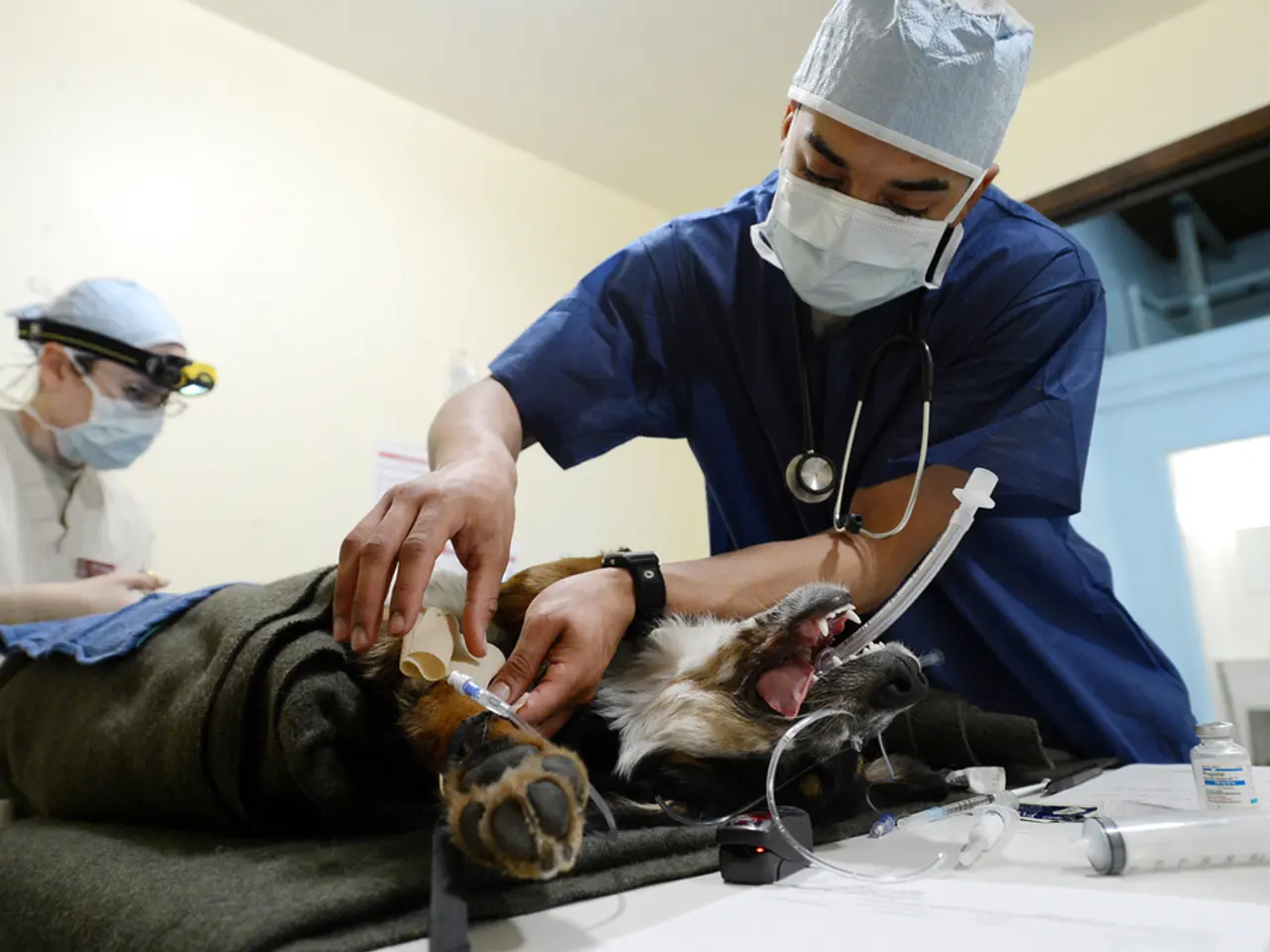Quarantine vs. Isolation: Distinctions, Applications, and Further Insights
Federal Quarantine and Self-Isolation Measures in the U.S.: A Comprehensive Guide
In the United States, federal quarantine and self-isolation measures are implemented by the Centers for Disease Control and Prevention (CDC) to control the spread of highly contagious or potentially severe diseases. Here's a breakdown of the measures for some common diseases and the role of the CDC in enforcing these protocols.
1. Measles
Measles, one of the most contagious diseases, requires quarantine for individuals who have had known exposure but show no symptoms and lack evidence of immunity. Isolation is used for those with symptoms to prevent spread.
2. Mumps
Individuals diagnosed with mumps are required to self-isolate for five days after the onset of symptoms (specifically parotid gland swelling) to avoid transmitting the virus to others.
3. H5 Bird Flu (Avian Influenza H5N1)
While the current public health risk is low, the CDC closely monitors H5 bird flu cases, especially in people exposed to infected animals. Infected individuals would likely be subject to isolation to prevent virus spread.
These specific diseases have protocols for quarantine and isolation, but the CDC maintains a list of federally quarantinable communicable diseases under U.S. federal regulations. These include cholera, diphtheria, infectious tuberculosis, plague, smallpox, yellow fever, viral hemorrhagic fevers, severe acute respiratory syndromes, and novel influenza strains of pandemic potential.
Quarantine and Self-Isolation in Practice
Quarantine is a public health measure used to prevent the spread of contagious diseases by restricting close contact between people who are healthy and those who may be infected. Self-isolation is used for individuals who have symptoms or test positive but are not showing symptoms.
People with weakened immune systems or those who experienced severe COVID-19 symptoms and hospitalization may need to self-isolate for up to 20 days. People with COVID-19 symptoms who can safely recover at home must self-isolate, as well as people who test positive for COVID-19 but have no symptoms.
The CDC recommends that those in self-isolation stay at home except to seek medical care, avoid contact with other household members and pets, wear a mask when around others, and clean and disinfect high-touch surfaces frequently.
Enforcement of Quarantine and Isolation
The U.S. Secretary of Health and Human Services has the authority to prevent the entry and spread of contagious diseases into the U.S. and between states. U.S. Customs and Border Protection officers and U.S. Coast Guard officers also have the authority to enforce federal quarantine orders. States have the power to enforce these orders, but laws vary between states, and violations are often considered a criminal offense.
Pilots or captains of ships can report passengers or crew members that may be sick to the CDC before they arrive. The CDC is responsible for carrying out daily actions to limit contagious diseases and has the authority to detain, medically examine, and release persons entering the U.S. or traveling between states who may be carrying a contagious disease.
In summary, federal quarantine and self-isolation in the U.S. primarily apply to diseases with high contagion or potential for severe outbreaks. The CDC uses a combination of isolation (for cases) and quarantine (for exposed but asymptomatic individuals without immunity) to control these diseases.
- While self-isolation measures during the COVID-19 pandemic primarily focus on individuals with the disease or symptoms, the CDC also enforces such protocols for chronic diseases and medical conditions that can be severely debilitating or life-threatening.
- The role of nutrition in maintaining overall health and wellness, including immune system strength, is crucial during periods of self-isolation.
- Implementing fitness and exercise routines at home becomes vital for mental health and emotional stability during self-isolation, thereby promoting personal growth and career development.
- Given the closure of many educational institutions, self-development platforms can assist in ensuring continuous learning and education-and-self-development opportunities, fostering a sense of purpose and growth.
- Healthcare providers should discuss treatments for chronic diseases and respiratory conditions with their patients during self-isolation to ensure proper management of their medical conditions.
- The Federal government should consider partnering with universities, research institutions, and medical organizations to accelerate the development of vaccines and treatments for emerging infectious diseases, improving the nation's overall preparedness for future pandemics.




